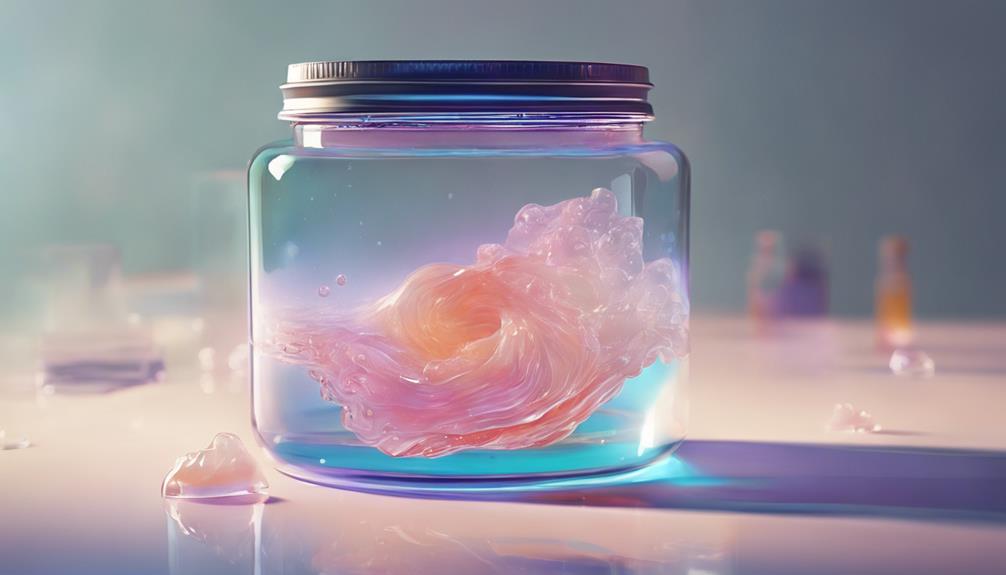Mastering the art of resin curing is a meticulous process that demands attention to detail and precision. The journey towards achieving impeccable resin prints free of degradation requires a deep understanding of curing techniques, post-processing methods, and the intricate balance between under and over curing risks. By exploring the nuances of UV light exposure, the strategic use of water baths, and the significance of isopropyl alcohol in the cleaning process, one can discover the secrets to excelling in resin curing art. This discussion delves into the critical elements that contribute to the successful preservation of print quality and structural integrity, paving the way for resin enthusiasts to elevate their craftsmanship to new heights.
Understanding Resin Print Degradation

Resin print degradation occurs as a result of improper curing techniques or prolonged exposure to curing elements, leading to a deterioration in the structural integrity and quality of the printed objects. Inadequate curing can result in prints that are brittle, prone to breaking, or have a sticky residue.
Overexposure to curing elements such as UV light can cause the resin to become too hard, leading to a loss of flexibility and an increase in brittleness. These issues not only affect the visual appeal of the prints but also compromise their functionality and durability.
Understanding the factors that contribute to resin print degradation is essential in ensuring the production of high-quality, long-lasting 3D prints.
Optimizing UV Light Curing Techniques
Enhancing the efficiency of UV light curing processes in resin printing involves strategic adjustments to optimize curing times and strengthen print quality.
UV light hardens resin, playing an important role in the overall printing process. UV curing stations are employed to reduce curing times greatly. Factors such as print size and UV intensity directly impact the curing process.
Understanding the influence of transparency on curing time under UV light is essential for achieving consistent results. DIY UV curing stations have gained popularity for their effectiveness and cost-efficiency.
Enhancing Curing With Water Baths

Building upon the efficiency of UV light curing techniques, the application of water baths in resin printing serves as a valuable method for enhancing the curing process and improving print quality.
Water baths can speed up curing time by aiding in heat dissipation and diffusing light for even curing. They also help prevent cracking that can occur when prints are exposed directly to sunlight.
Using glass to block UV light in a water bath guarantees that the curing process is controlled and uniform. Additionally, turning prints in a water bath helps secure that all areas receive adequate exposure for consistent curing results.
Water baths offer a reliable and effective way to optimize the post-print curing stage in resin printing.
Isopropyl Alcohol: Usage and Safety
The utilization of isopropyl alcohol in the resin printing process necessitates careful attention to usage and safety protocols to mitigate potential risks and guarantee excellent post-printing outcomes. Isopropyl alcohol is commonly used for washing off uncured resin from printed objects, aiding in shortening post-curing time.
However, it is important to be aware of the toxicity of uncured resin and handle it properly to avoid health risks. Recommendations for safe usage include ensuring proper ventilation, wearing protective gear like gloves and goggles, and disposing of used alcohol appropriately.
It is vital to differentiate between isopropyl alcohol used for cleaning purposes and those specifically formulated for resin curing to ensure effective results without compromising safety.
Preventing Over Curing Risks

Isopropyl alcohol's role in resin printing extends beyond cleaning to the critical aspect of preventing over curing risks, necessitating a keen understanding of its application and potential implications on print quality and longevity. Over curing can lead to print degradation, affecting the structural integrity and surface finish of resin prints. To effectively prevent over curing, it is essential to carefully manage the curing process, monitor exposure times, and utilize appropriate curing methods. Below is a table highlighting key strategies to mitigate over curing risks:
| Preventing Over Curing Risks | |
|---|---|
| Monitor Exposure Times | |
| Use Recommended Curing Methods | |
| Calibrate UV Intensity | |
| Inspect Prints During Curing | |
| Implement Post-Curing Checks |
Frequently Asked Questions
Can Resin Prints Be Over-Cured if Left in UV Light Too Long?
Over-curing resin prints by prolonged exposure to UV light can lead to print degradation, affecting structural integrity and surface finish. It is essential to adhere to recommended curing times to prevent such issues and guarantee excellent print quality.
What Is the Ideal Distance Between UV Light and Resin Prints?
The ideal distance between UV light and resin prints is essential for ideal curing. Maintaining a distance of 1-2 inches guarantees proper hardening without risking over curing. This balance is key to achieving strong, durable prints.
How Can I Tell if Resin Prints Have Been Properly Washed With Isopropyl Alcohol?
To guarantee resin prints are properly washed with isopropyl alcohol, look for a clean surface free of sticky residue, inspect for any uncured resin remnants, and follow recommended washing techniques. Proper washing is essential for print quality and safety.
Are There Alternative Methods to Post-Curing Resin Prints Besides UV Light?
Alternative methods for post-curing resin prints beyond UV light include water baths, sun curing, and DIY curing stations. Factors like print size and material transparency influence curing times. These methods offer varied approaches to achieve ideal hardness and strength.
What Is the Best Way to Store Resin Prints to Prevent Degradation Over Time?
To prevent resin print degradation, store prints in airtight containers away from direct sunlight and moisture. Utilize desiccants to control humidity levels within the storage area. Regularly inspect prints for any signs of deterioration and address promptly to maintain print quality.
Conclusion
In conclusion, mastering resin curing techniques is essential for avoiding print degradation and ensuring high-quality resin prints.
One interesting statistic to note is that according to a recent study, proper curing with UV light can increase print durability by up to 30%.
By optimizing exposure times, utilizing curing stations, and incorporating post-processing methods such as water baths and isopropyl alcohol, one can achieve visually appealing resin prints with peak structural integrity and surface finish.